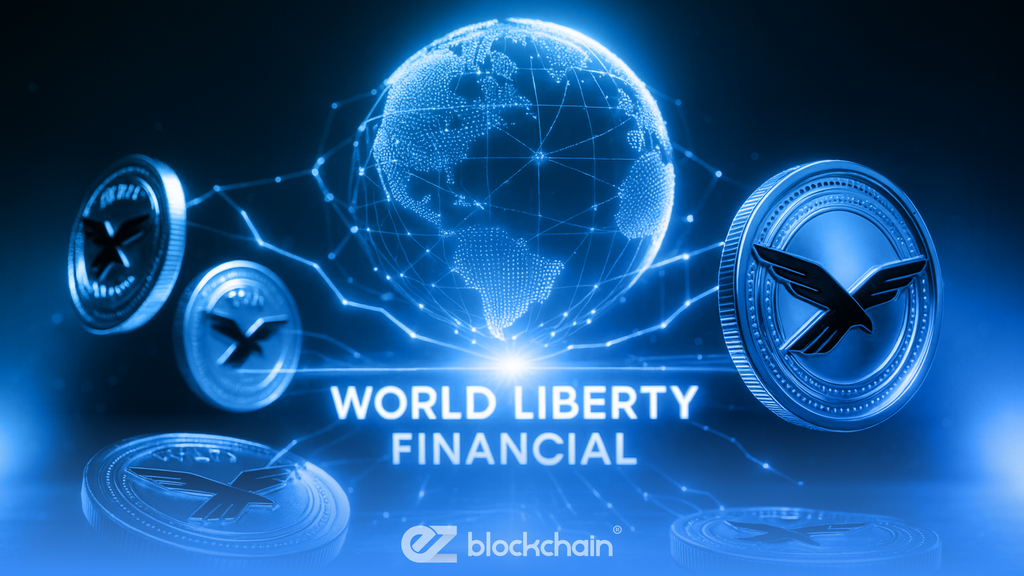Stay up to date with the latest news, announcements, and articles.
- The ASIC Arms Race Explained
- Hardware Advancements in 2025
- Network Difficulty Trends and Impact
- Electricity Costs and Energy Efficiency
- Mining Profitability Forecast
- Impact of Renewable Energy Adoption
- Mining Centralization vs Decentralization
- Future ASIC Models to Watch
- Mining Pools: Evolution and Competition
- Regulatory Trends Affecting Mining
- Conclusion: Preparing for 2026
- FAQ
As of mid-2025, global network metrics underscore this shift: the Bitcoin network hashrate has surged to ~831 EH/s, having peaked above 900 EH/s, reflecting heavy reinvestment in ASIC upgrades [1]. Simultaneously, mining profitability hit its highest levels since the 2024 halving: miners earned an average of $57,400 per EH/s in July 2025, up about 4 % from June, according to JPMorgan’s tracked data [2]. These trends affirm that while new ASICs still matter, the competitive frontier is broadening.
The ASIC Arms Race Explained
The term “ASIC arms race” describes the relentless cycle of hardware obsolescence in bitcoin mining: newer ASIC generations must outperform older models in both hash rate and energy efficiency to remain viable. Historically, each new generation has required shrinking process nodes, more aggressive voltage scaling, refined memory and routing, and enhanced thermal design to push the envelope. But after years of steady gains, the marginal returns from incremental improvements are diminishing.
In 2025, many miners find that a 10–20 % improvement in efficiency (Joules per Terahash) may cost 30–50 % more in capital expense (CAPEX). As such, the decision calculus is shifting: rather than blindly pursuing the “most powerful bitcoin miner,” operators now carefully weigh total system trade-offs—cooling, energy contracts, reliability, firmware overhead, and integration with grid constraints. The arms race morphs into a “systems race.”
The next battleground is efficiency per dollar invested and sustainable operating margins, rather than absolute TH/s. In that sense, the arms race is maturing: winners will be those who optimize holistically, not just those who push raw hash.
Hardware Advancements in 2025
In 2025, ASIC innovation continues, but with a more nuanced emphasis. Rather than raw doubling of throughput, many improvements target modular thermal control, per-chip voltage/frequency scaling, advanced binning, and firmware-level tuning.
“The future lies in fine-grained control and dynamic adaptation, not brute force alone.”
Between architectural leaps, miners are focusing on:
- Enhanced cooling integration (hydro, immersion, liquid)
- Smart thermal balancing across hash boards
- On-chip voltage/frequency scaling per core block
- Redundancy, hot-swapability, and modular maintenance
These advances may yield incremental gains of 5–15 % in efficiency, but in a tight margin environment, they can be decisive.
Network Difficulty Trends and Impact
Network difficulty remains a central control knob for mining dynamics. After the 2024 halving, many expected difficulty growth to temper; instead, the hash rate rebounded swiftly, pushing difficulty upward again. As of May 2025, the network hashrate sat at ~831 EH/s, peaking earlier near 921 EH/s, marking a ~77 % increase from the 2024 low (519 EH/s).
“Difficulty’s trajectory continues to punish under-efficient or legacy rigs.”
Some key pressure points:
- Difficulty growth per quarter is averaging in the high teens to low twenties percent
- Every 5 % rise in difficulty erodes effective yield by ~5 % (all else equal)
- Marginal miners must continuously re-evaluate break-even thresholds
- Hardware that loses 10–15 % efficiency relative to top models can become obsolete
Thus, simulating a multi-year difficulty curve is as critical to ROI models as hashing power or purchase cost.

Electricity Costs and Energy Efficiency
Electricity remains the dominant recurring cost in bitcoin mining. Even with a powerful ASIC, if you pay $0.12/kWh and your efficiency is only 20 J/TH, margins shrink dramatically. Conversely, securing off-peak, surplus, or renewable pricing can flip the economics. In 2025, many industrial miners negotiate multi-year power contracts and locate near renewable generation to lower marginal cost.
“The real battleground is between watt-hours, not raw terahashes.”
Operational levers include:
- Power purchase agreements (PPAs) tied to renewable surplus
- Time-of-use pricing optimization (running heavier loads in off-peak windows)
- On-site storage or co-located battery buffering
- Minimizing auxiliary loads (cooling, fans, conversion losses)
The greater your ability to reduce your effective energy cost per kWh, the more leeway you have to endure difficulty increases or BTC price volatility.
Mining Profitability Forecast
Forecasting profitability in 2025–2026 requires modeling several intertwined variables: BTC price, network difficulty growth, power cost, hardware depreciation, and operational overhead. Historically, post-halving phases compress margins initially, then bounce when scarcity or price appreciation restores upside.
In mid-2025, miners earned ~$57,400 per EH/s in block reward revenue, representing the highest levels post-halving. This underscores that in favorable conditions, large fleets still command respectable returns.
To stay ahead, operators must reinvest selectively, continuously benchmark efficiency, and maintain optionality (e.g. modular upgrade paths). The future of current bitcoin mining profitability 2025 lies in dynamic agility, not static brute force.
Impact of Renewable Energy Adoption
Renewable energy is no longer an optional sustainability talking point—it is becoming core to profitable mining. In 2025, renewable and low-carbon sources account for approximately 42.6 % of global mining energy, with another 9.8 % from nuclear [3]. Regions rich in hydropower, geothermal, wind, or solar surplus are increasingly preferred mining destinations.
At the same time, miners who build onsite renewables or partner with grid operators for curtailment energy (i.e. using excess generation that would otherwise be wasted) gain cost advantages that fossil-fueled peers struggle to match. Recent decarbonization reports emphasize that mining firms adopting renewables or participating in energy markets can unlock new revenue or cost arbitrage channels.
Mining Centralization vs Decentralization
The tension between mining centralization and decentralization is sharper in 2025 than ever. Economies of scale, energy access, capital advantage, and grid proximity favor large players. But protocol-level and community innovations also push back. Below is a comparison:
| Factor | Centralized Mining (Large Farms) | Decentralized / Small Miner |
| Energy Contract Leverage | Gains access to cheap bulk PPAs, curtailment energy | Pays retail or less favorable rates |
| Hardware Access | Bulk orders, priority allocation, custom units | Must compete for smaller batches or secondary market |
| Maintenance & Operations | Dedicated infrastructure teams, cooling systems, redundancy | Lean operation, fewer spares, more risk |
| Protocol Incentives & Fairness | May influence policy, pool dominance | Rely on fair node protocols, Stratum v2, open ASIC projects |
While centralization strengthens economies, measures like open-source ASICs, decentralized pool protocols (e.g. Stratum v2), and DATUM templates seek to rebalance power dynamics. The outcome remains unsettled: the network may bifurcate into “enterprise class” operations and resilient grassroots miners.
Future ASIC Models to Watch
Looking toward 2026, ASIC development will push further into integration, adaptability, and system-level optimization. Key themes and models to watch include:
- Adaptive binning and per-chip scaling: ASICs that dynamically throttle under load or temperature variance to preserve lifespan and marginal gain
- Integrated liquid/immersion cooling: more units may natively include fluid loops, minimizing fan overhead and thermal parasitics
- Modular expansion slots: allow incremental upgrades of hash boards or power modules without full replacement
- Specialized farm-grade series: variants tuned for ultra-dense deployment rather than just maximum throughput
Recent research also points to strategic behaviors such as selfish mining strategies under variable transaction-fee rewards, suggesting that protocol incentives may shift to deter overly aggressive incentive extraction [5]. As miners internalize these dynamics, those hardware models offering firmware flexibility and on-chip control will hold stronger moats.

Mining Pools: Evolution and Competition
Mining pools in 2025 are evolving beyond simple hash aggregation. Many now offer:
- Variable reward schemes (PPLNS, PPS+, etc.) with dynamic volatility hedging
- MEV/transaction-fee routing layers to capture additional value
- Stratum v2 + protocol improvements to reduce pool-operator centralization
- “Merge mining” or multi-block template features
Competition among pools now emphasizes trust, transparency, fee optimization, and optional delegation. In many cases, miners evaluate pools not purely for fees, but for governance, payload transparency, and security assurances.
Regulatory Trends Affecting Mining
Regulation is an increasingly salient force in mining’s future. In 2025, ESG enforcement, carbon accounting, energy disclosure mandates, and local permitting constraints are multiplying [6]. Publicly traded miners must incorporate environmental metrics into quarterly reports.
Meanwhile, jurisdictions are experimenting with incentives or disincentives: some favor renewables-based mining with tax credits, others impose demand charges or peak penalties. In certain energy-constrained regions, mining may face curtailments or grid prioritization challenges. The regulatory burden will weigh more heavily on marginal players than those with scale or compliance infrastructure.

Conclusion: Preparing for 2026
As the ASIC arms race gives way to a more holistic contest, miners in 2025–2026 must shift their mindset: success now hinges on marrying advanced hardware with robust energy strategy, operational agility, and regulatory resilience. The best bitcoin mining hardware 2025 will remain necessary—but far from sufficient on its own.
If you’re planning capital deployment now, focus on modular systems, secure renewable or surplus power routes, firmware flexibility, and risk buffers. At EZBlockchain, we can help you vet next-gen ASICs, model your ROI under multiple scenarios, and set up deployment-ready infrastructure. Reach out if you’d like a tailored hardware + power-strategy blueprint for 2026.
FAQ
What is the ASIC arms race?
It’s the competition in mining hardware development, where vendors push to outdo each other in hash rate, energy efficiency, cooling, and integration, forcing constant reinvestment.
How will energy efficiency shape future mining?
As margins compress, differences of a few Joules per Terahash or a few cents per kWh can determine profit vs. loss. Efficiency and energy sourcing become core differentiators.
Will small miners survive in 2026?
It’s challenging—but possible. Decentralization efforts (open ASICs, fair pools), strategic niche deployment (edge, hybrid energy zones), and lean operations may preserve a place for smaller miners.
Which hardware innovations matter most?
Expect advances around adaptive voltage/frequency scaling per core, modular hash board design, integrated cooling, and firmware flexibility to extract marginal gains.
How does network difficulty affect profits?
Rising difficulty reduces revenue per unit of hash. You must model multi-year difficulty drift to ensure your ASIC or mining fleet remains viable under stress.
Fill out a form and our bitcoin mining expert will contact you.
FREE CONSULTATIONchoose
a miner
profit and
understand data?
business remotely
with EZ Blockchain?
Fill out a form and our bitcoin mining expert will contact you.









